You can enjoy two of famous Nakasendo post towns and a well-preserved old route between Tsumago-juku and Magome-juku. Many parts of the old Nakasendo highway in this section are off tarmac road. Two post towns remind us the traditional atmosphere Nakasendo, making it a popular hiking trail.
Physically, it is easier to walk from Magome-juku to the Tomago-juku, as there are many downhill slopes. However, public transportation is inconvenient from the Tsumago-juku, so walking from Tsumago-juku may be more convenient unless you use a car.
If you like Magome-Tsumago hiking, please contact us for a guide and transport. We can arrange a tour from Nagoya, Takayama, Gero Onsen, Matsumoto, etc. For the tour starting from Takayama, see this site. From Nagoya, see here.
If you like to visit Magome and Tsumago, Contact us from here.
Tsumago-juku
At a time when many traditional landscapes were being lost, Tsumago-juku was one of the first communities to engage in landscape preservation activities. In 1976, in recognition of these activities, the government selected Tsumago-juku as one of the first sites to be designated as an Important Preservation District for Groups of Traditional Buildings.

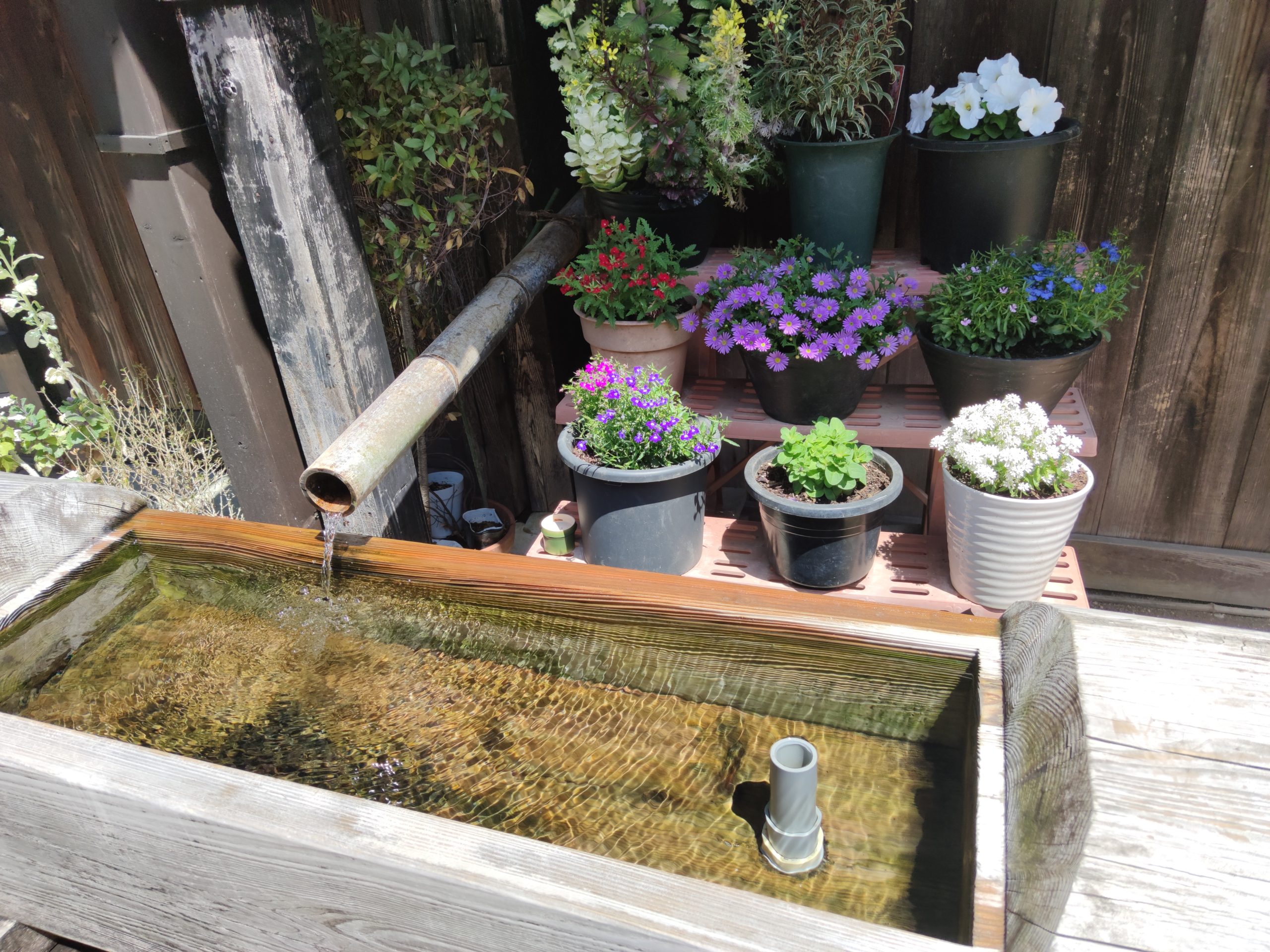







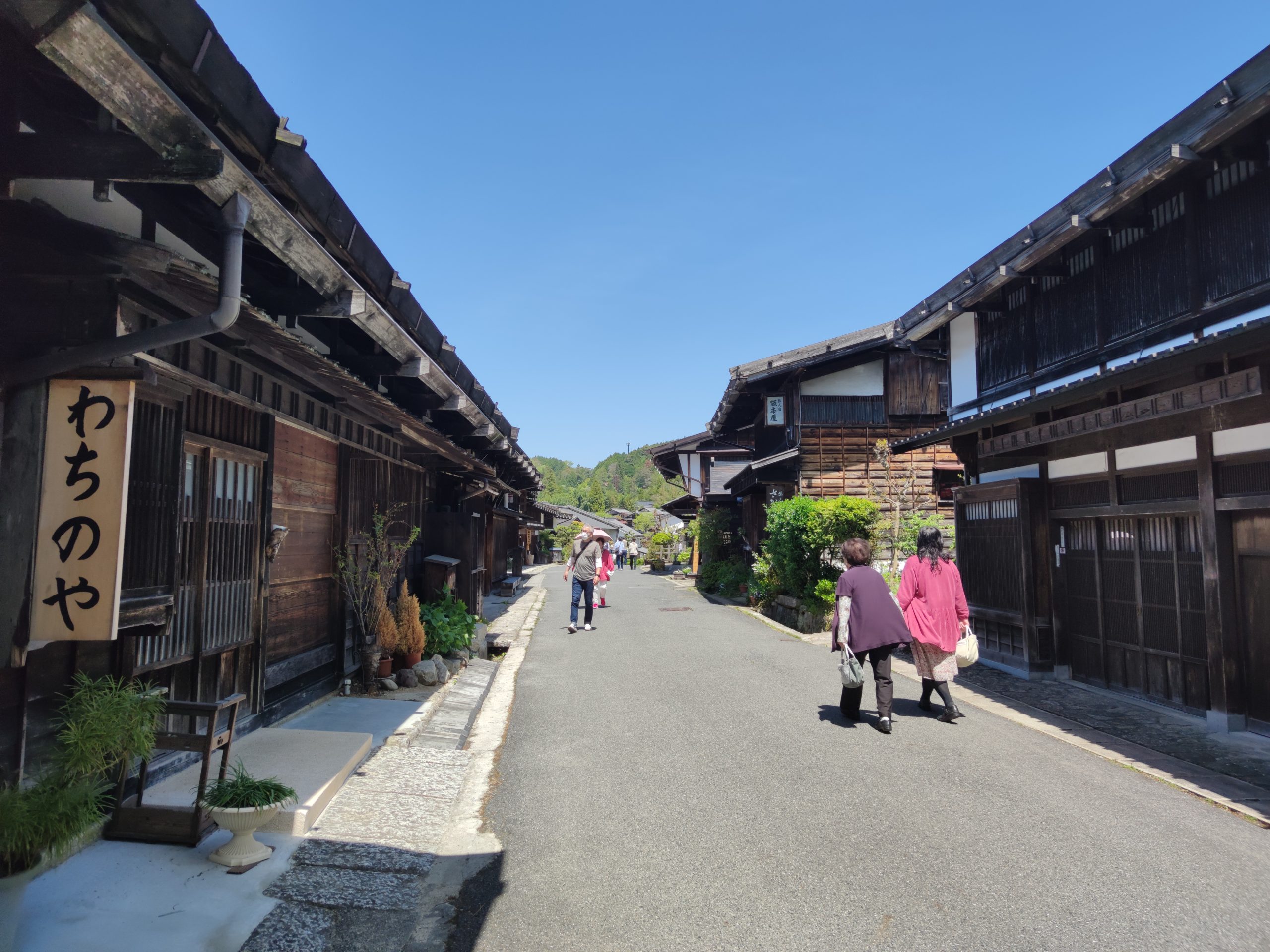

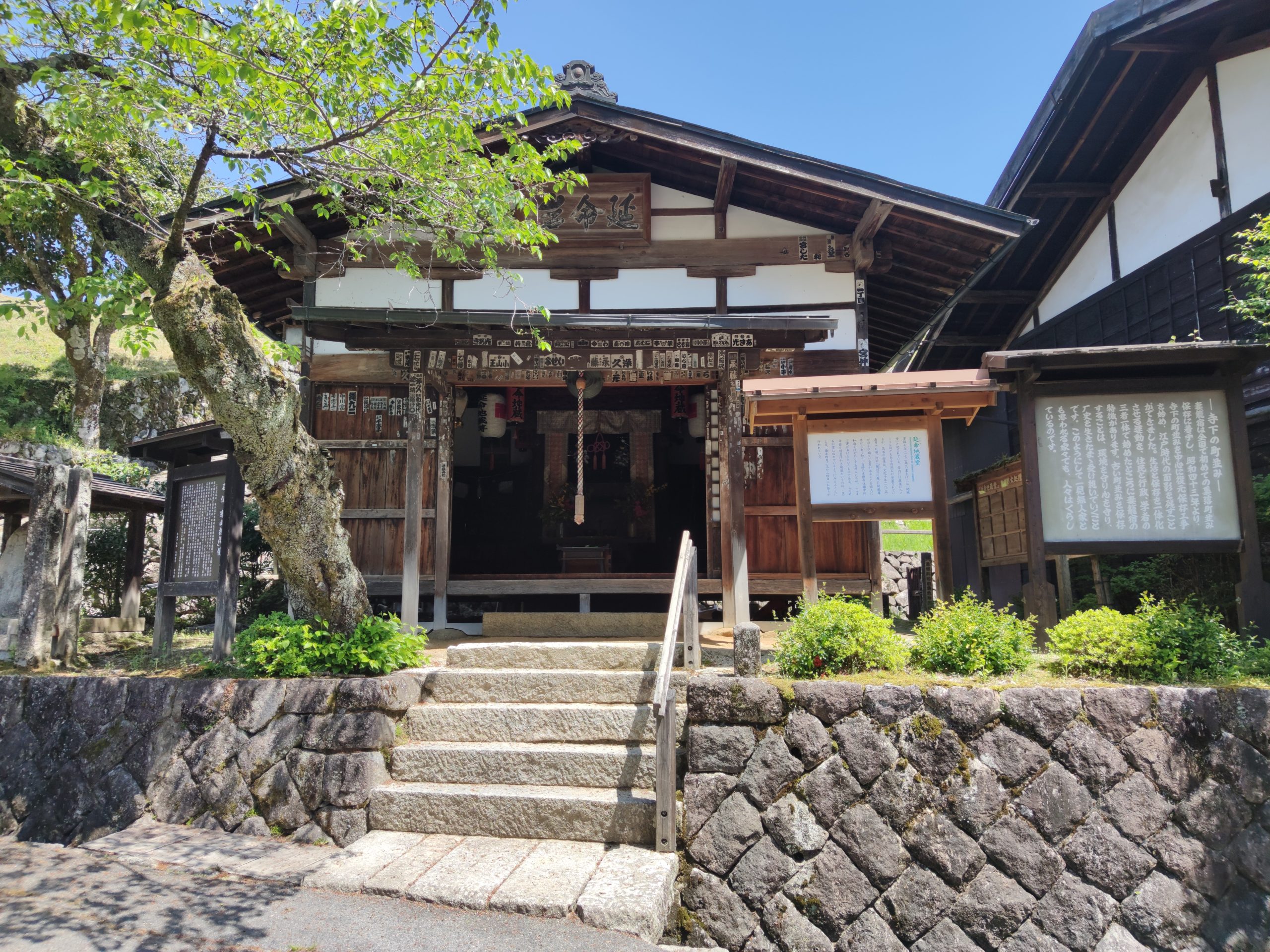
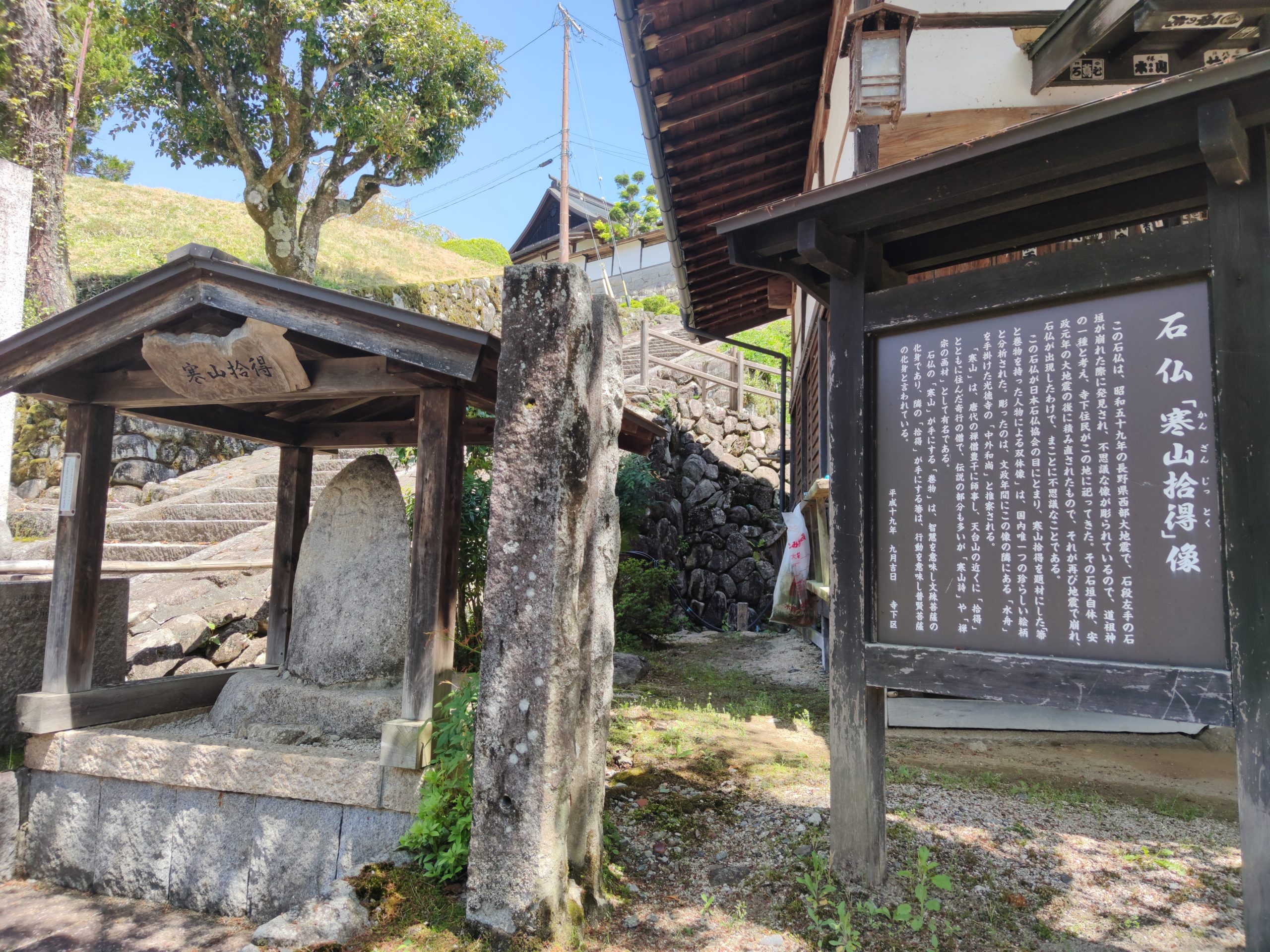
On this visit, I had lunch at a restaurant called Omote. There are many similar restaurants that serve soba noodles, but only this restaurant serves the tempura of maitake mushrooms and taranome, Aralia Sprout (seasonal).

There is a big straw horse on the outskirts of Tsumago-juku, and the white wisteria is beautiful in season.

From here, it is a hiking trail that follows the Nakasendo road between Tsumago-juku and Magome-juku. This is one of the best known Nakasendo trekking course.
Trail
The entrance of the course looks like this. The old Nakasendo runs beside the parking lot for tourists to Tsumago-juku.

After walking for a while, you will see the information board for the “Stone Pillar Signpost”. It notes that Nakasendo was used until the middle of the Meiji era. I found the pillar in the garden of a nearby private house, not on the side of the road.

Otsumago
After a comfortable walk, you will find a village of Otsumago.

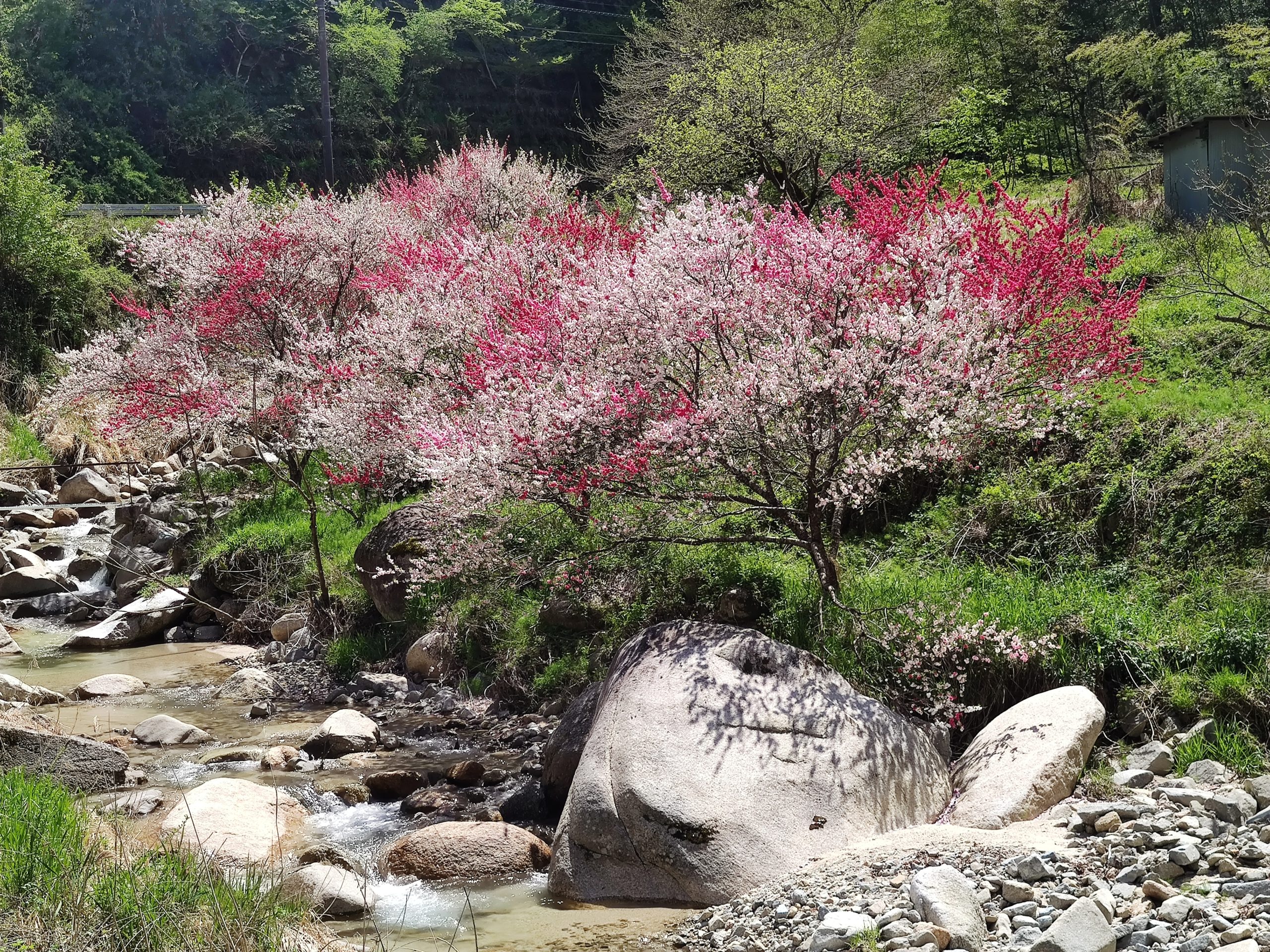


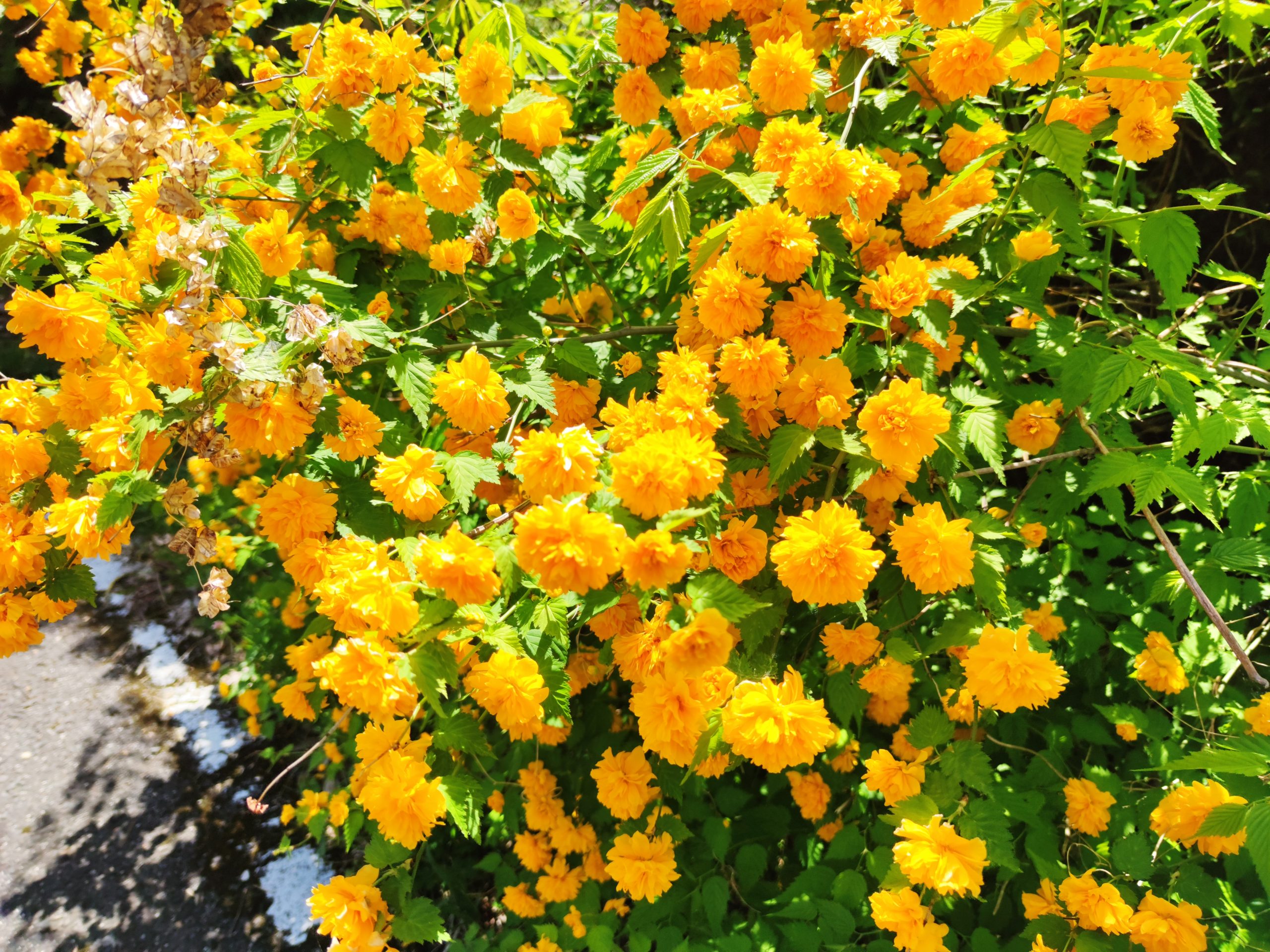

Then the road enters the forest, and when you go uphill, you will see Ox-Head Kannon (Gyutokannon). Hayagriva (Batokannon) is often seen, but Ox-Head Kannon is only here along Nakasendo. It is said that it is a mourning for the black cow that climbed the steep slope pulling a cart. Since the six arms (six elbows) seem to be a characteristic of Hayagriva, I wonder if the cow’s head was placed on the head of Hayagriva.

Eventually Kurashina Soreisha. The spirit of Shichirouzaemon Kurashina is enshrined. He was a senior samurai belonged to Sadayoshi Ogasawara of Matsumoto Castle. Shichirouzaemon visited Toyotomi Hideyoshi, and on his way back, he was attacked by an opposing local clan at Magome Pass and was killed.

Before long, Koshinzuka and probably the statue of Hayagriva (Batokannon) on the roadside. Beyond this, Nakasendo was closed due to the collapse of the mountain slope, and there was a road that passed through Otaki and Metaki Falls.



Next is the giant Sawara cypress, one of the Five Sacred Trees of Kiso. Estimated age is around 300 years. The one with branches rising from the middle is called Kamoigi, and it has been used as the sitting place for mountain gods and tengu.

Tea house
The site of Shiraki Aratame Bansho in Ikkokutochi. The Owari Han has just monitored the timber carried out of Kiso. Next to it is Tateba Tea House, where locals serve tea to visitors for free. There used to be a village here as well, but it seems that only the Makino family house, which was built in the late Edo period and is now used as a teahouse, remains today.


Climbing up a bit from here, you will reach the Magome Pass. There is a teahouse on the pass. This is the end of a long climb. There is only downhill from here to Magome-juku.
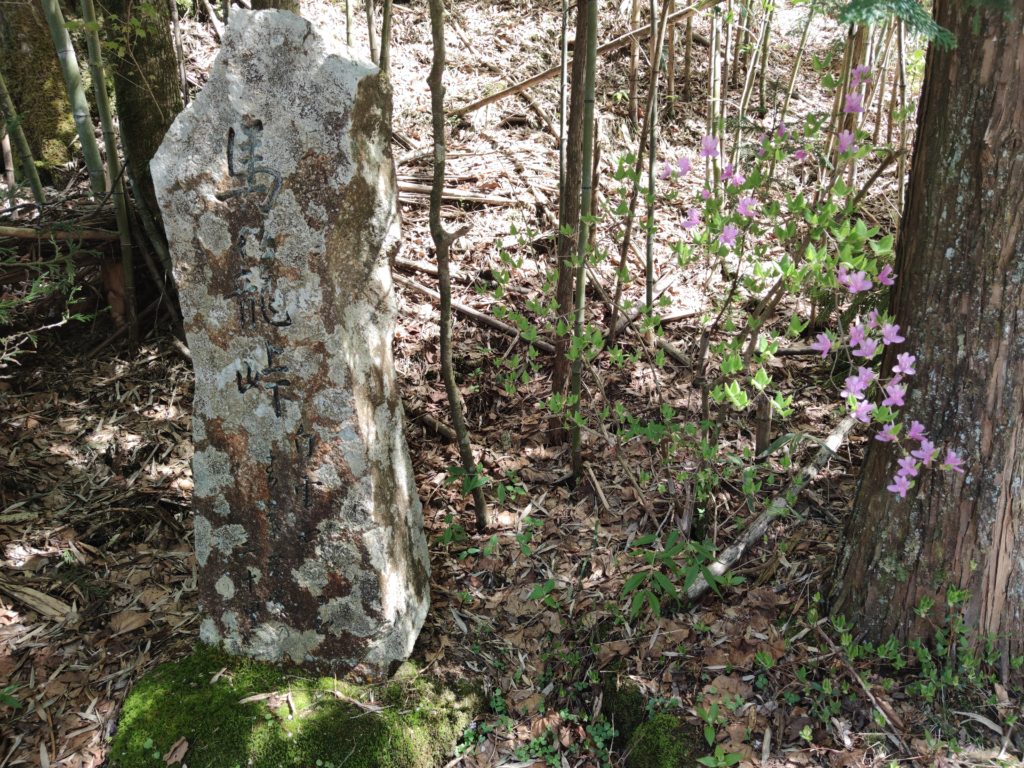
After a while, you will see a famous Jippensha Ikku’s mad song (kyoka) monument. Jippensha Ikku traveled to Nakasendo in 1811 and wrote a book “Kiso Kaido Hiza Kurige”.

Magome-juku
Going down further, the scenery of Mt. Ena will open and you will reach the observatory just above Magome-juku.




Go down the road and you will find Magome-juku. It was once a forgotten mountain village. But with the efforts of the locals, it has been revived as a new tourist destination. There is also a memorial hall for Toson Shimazaki, who was born there. He wrote a famous nobel “Before the Dawn” (Yoakemae).
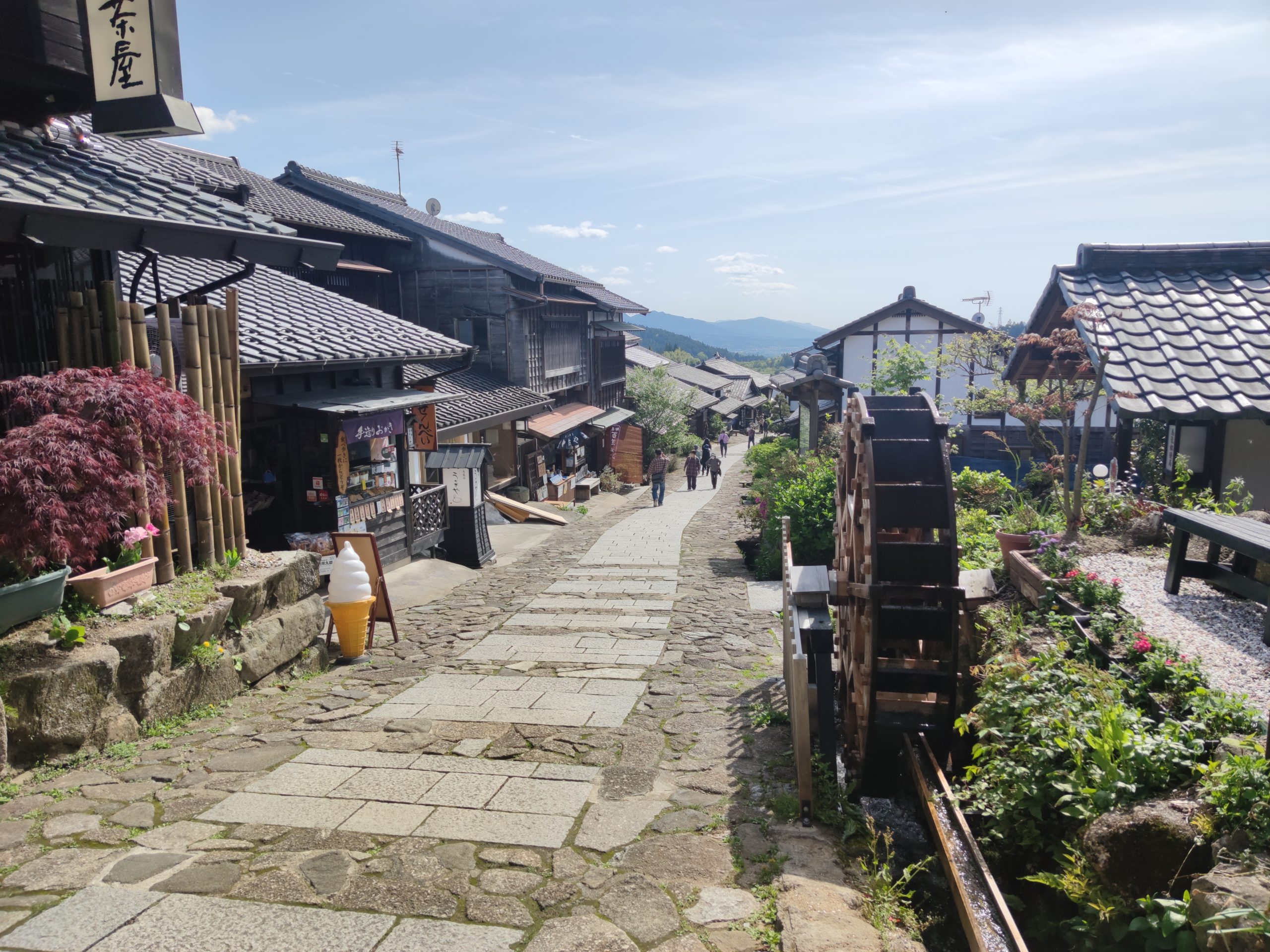





Starting point
This tour starts from Tsumago-juku. The goal is Magome-juku.
Course Time of Tsumago-Magome hiking
This course takes about 3-4 hours. It is a route where paved roads and loose mountain roads appear alternately.
Lunch
Several restaurants are available in both Tsumago-juku and Magome-juku. But there is only a few during the trek.
Toilet between Tsumago-juku Magome-juku
There are public toilets here and there along the way.
What to bring and what to wear
It is not a city walk, so you should wear a hiking cloth. Hiking shoes or sneakers are good.
Best time
You can visit this trail all year round, but it is best to avoid it during the hot summer months and when there is snowfall. Early spring to early summer, and late autumn are probably best.
Neighborhood Attractions
If you have plenty of time, then try to add Midono-juku – Tsumago-juku course.
Inquiry
Please use this form to contact us.
Comments
4 responses to “Tsumago-Magome Hiking”
[…] visitors may walk from Tsumago-juku to Magome-juku and then to Nakatsugawa-juku in a single […]
[…] Please check this page for a course guide. […]
[…] Tours are available from Nagoya, Nakatsugawa etc. You can combine a visit to Ontake Kodo with Magome and Tsumago visit. Another option is the combination with Naegi Castle […]
[…] You can continue hiking from Tsumago-juku to Magome-juku. […]